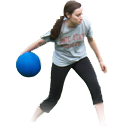
The 10 Best Ways to Keep Bones Healthy
Osteoporosis (“porous bones”) is by far the most common bone disease, marked by an increased risk of bone fractures due to weak and brittle bones. Although it’s often equated with postmenopausal women, men aren’t safe from osteoporosis. Approximately 4 percent of men over 50 years of age have poor bone health, and 38 percent of men in that age group have a condition called low bone mass (often a precursor to osteoporosis), according to a report by the U.S. Centers for Disease Control and Prevention.
What’s more, research suggests one out of five men over 50 years old gets at least one bone fracture in their lives. And though fractures are less common in men (about half of women over 50 are expected to get a bone fracture), the outcomes of their fractures are more serious.
“The mortality from fractures is higher in men,” says Dr. René Rizzoli, head of the Division of Bone Diseases at Geneva University Hospitals in Switzerland.
Osteoporosis and bone fractures don’t have to be a part of the aging process, though. They can usually be prevented with certain lifestyle changes. Here are 10 simple tips to keep your bones healthy and strong.
Eat A Calcium-Rich Diet
Calcium is a vital mineral that provides structural strength to bones (and teeth). It also helps with various bodily functions, such as blood clotting and muscle contracting. But our bodies don’t produce calcium. We constantly lose the mineral through our skin, nails, sweat, urine, and feces. If these calcium stores aren’t replenished, the body starts taking the calcium it needs from bones.
“It’s recommended you get about 1,000 to 1,200 milligrams of calcium every day, which ideally should come from your diet,” says Dr. Michael Lewiecki of the New Mexico Clinical Research & Osteoporosis Center. There are a number of foods that can provide you with calcium, including dairy, sardines, salmon and various green vegetables, such as collard greens, kale, and broccoli, according to the National Osteoporosis Foundation. Additionally, various products are now fortified with calcium, including oatmeal, cereal, orange juice, and soymilk, says Lewiecki.
Get Some Vitamin D
In addition to calcium, vitamin D is crucial for healthy bones, partly because it allows the body to absorb calcium, which would otherwise pass out of the body as waste. Unlike with calcium, there are few dietary sources of vitamin D, aside from fatty fish (tuna, mackerel, and salmon), fish liver oil, and food fortified with the nutrient.
The sun provides best way to get vitamin D. Your skin starts producing vitamin D when exposed to UV B rays. However, many factors affect UV radiation exposure and vitamin D synthesis, including cloud cover, sunscreen, race, and age. For example, research suggests that a 70-year-old person only produces about 25 percent of vitamin D as a 20-year-old person when exposed to the same amount of sunlight. There are also issues with not getting enough sun during the winter, and developing skin cancer from too much sun. Given these variables, it’s difficult to recommend a set amount of sun exposure that works for everyone, but experts generally suggest briefly exposing the face and limbs to the sun every day.
“Many people will need to take vitamin D supplements,” Lewiecki says. The National Osteoporosis Foundation recommends 400 to 800 international units (IU) daily of vitamin D for adults under age 50, and 800 to 1,000 IU daily for adults 50 and older.
Stock Up on Dried Plums
Research suggests eating dried plums can help maintain healthy bones. In 2011, a study found adults who ate dried plums (about 10 per day) for a year had significantly higher bone mineral density than adults who ate apples daily (though the study was done in postmenopausal women). Plums slow the rate of bone resorption (the breakdown of bone), the researchers say. Additional research on male mice also showed that dried plums improved bone mass and structure.
Exercise
Regular exercise is crucial to a healthy life, but when it comes to your bones, not all exercise is created equal. For strong bones, experts recommend weight-bearing exercises and muscle-strengthening exercises.
“Anything you do on your feet—walking, running, jumping, skiing—is good for bone health,” Lewiecki says. On the other hand, non-impact exercises aren’t effective for building strong bones. “Swimming is great for the cardiovascular system, but it doesn’t help much,” Rizzoli says.
Why does exercise help make strong bones? Bones are living tissues that are constantly changing; some cells add calcium to bones, while other cells remove the mineral from bones. When you stress your bones through physical activity, the cells increase the rate of calcium addition, causing the bones to grow denser.
Skip the Vibration Therapy for Now
Whole-body vibration therapy in which a machine rapidly vibrates the body to induce bone stress gained a lot of attention as a possible method to improve bone health. Though the therapy makes sense in theory, “there still isn’t sufficient evidence to recommend it,” says Lewiecki.
For instance, a year-long study found whole-body vibration therapy didn’t improve the bone density and structure of postmenopausal women. A three-year-long study led by Harvard University researchers also found no benefit to the therapy. Interestingly, additional research showed the therapy significantly improved the bone strength of adolescents with cerebral palsy. “Still, your best bet is to get regular physical exercise,” says Rizzoli.
Don’t Smoke
Unlike whole-body vibration therapy, the scientific research is pretty clear on cigarettes: Study after study has shown that smoking harms your bones. Worse yet, smoking doesn’t attack your bones along just a single avenue, according to the American Academy of Orthopaedic Surgeons. Smoking reduces the blood supply to bones and the absorption of calcium; the nicotine in cigarettes causes certain cells to make less bone; and smoking affects the breakdown of estrogen, which is important for strong bones in both women and men.
Recent research also suggests that smoking causes a spike in the levels of certain proteins involved with bone resorption. Additionally, health professionals associate smoking with other risk factors. “Smokers often have other habits that affect bones, such as drinking too much, having poor nutrition, and/or being underweight,” says Dr. Lewiecki.
Drink in Moderation
Research has shown that drinking alcohol can be good for your cardiovascular system, but only if you drink in moderation—the same thing is true when it comes to bone health. Men and women who drink alcohol appear to have higher bone mineral densities than people who abstain. But chronic drinking and binge drinking has the opposite effect. A recent study also showed that excessive drinking hampers your body’s ability to heal bone fractures. “If you’re a wine drinker, one or two glasses a day can have a protective effect on bone health,” says Rizzoli. “Any more, then [alcohol] becomes deleterious.”
Cut Back on the Salt
Salt-heavy diets can lead to high blood pressure, autoimmune diseases, and, yes, bone loss. The issue with salt is that it increases the excretion of calcium in urine, which can lead to bone loss if not offset with an adequate intake of dietary calcium. Research has also found that a high-salt diet increases bone fragility and risk of fractures.
Hit the Sack
It’s no secret that sleep deprivation results in numerous harmful effects, including increasing the risk for obesity, heart disease, and depression, according to the National Heart, Lung, and Blood Institute. Research is now starting to suggest that sleep deficiencies can impact your bone health, too. For instance, a study in rats showed that chronic sleep deprivation can cause abnormal bone marrow and bone formation. More recently, scientists discovered that people with sleep apnea are at a heightened risk for osteoporosis. However, more research cannot definitively link sleep problems with poor bone health.
Check Your Prescription Medications
If you’re seeing multiple specialists to cover your healthcare needs, make sure to always be upfront about the medications you’re taking because numerous drugs can result in bone loss. “The one that most often comes to mind is steroids for people with chronic lung disease and asthma,” says Lewiecki. “That has devastating effects on bones.” Other medications that are bad for bones includes antiandrogens for prostate cancer, aromatase inhibitors for breast cancer, certain anti-seizure medications, and selective serotonin reuptake inhibitors (SSRIs) for depression.
It’s not always possible to stop taking these medications, so it’s vital to monitor your other potentially bone-harming habits, and work with your healthcare provider to determine the lowest possible drug dose you can take to control your symptoms. Bone density tests are also available if you’re concerned about your bone health, Dr. Lewiecki says. The National Osteoporosis Foundation recommends all men over the age of 70 get a bone density test. You should also get the test if you broke a bone after the age of 50, or if you have risk factors, such as smoking, living an inactive lifestyle, or having a family history of osteoporosis, and are between the ages of 50 and 69.
By Joseph Bennington-Castro
The Arena District Athletic Club is more than just a gym, it’s a premier fitness facility located in the heart of the Arena District in downtown Columbus. We provide convenience and quality, featuring top-of-the-line equipment, top-notch personal trainers, spa-like locker rooms and a wide variety of free group fitness classes daily including Cardio, Spinning, Barre Fusion, Yoga, Boot Camp and more. We offer free 2-hour parking and convenient contract-free memberships, to fit your healthy lifestyle needs. Don’t just join, belong.





